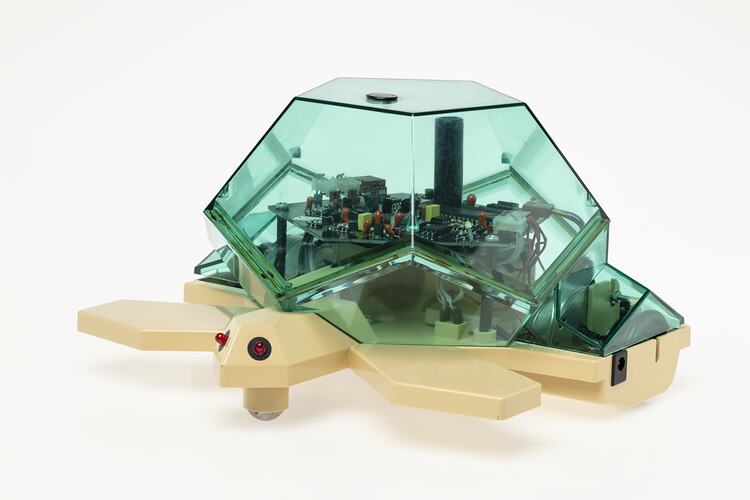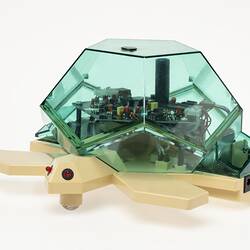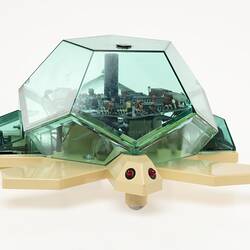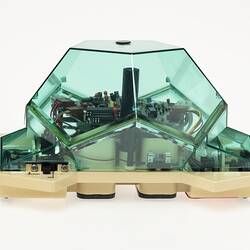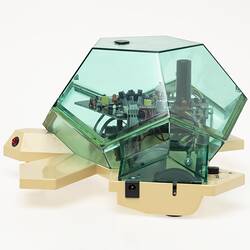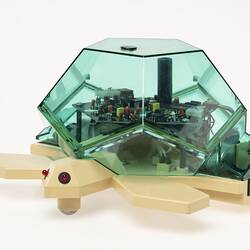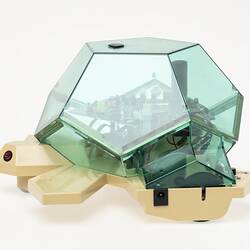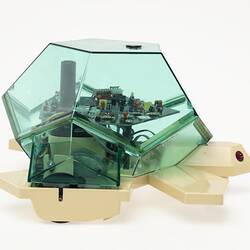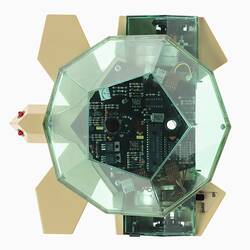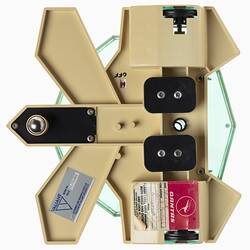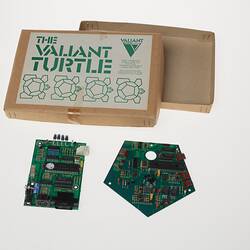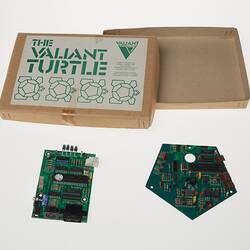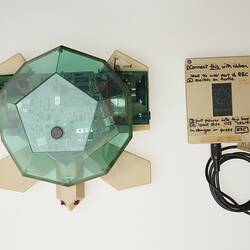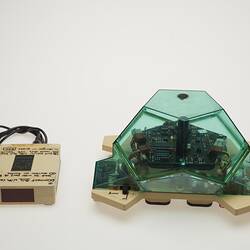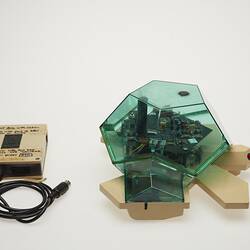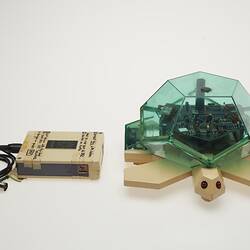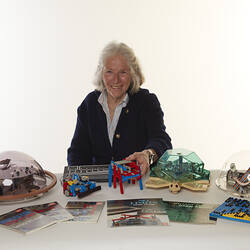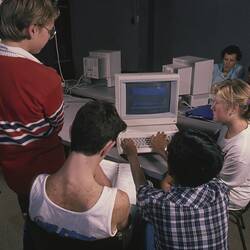Summary
Educational computerised floor-roving robot, 'The Valiant Turtle' was made by Valiant Designs Ltd, London, United Kingdom, from 1983 to 2011.
The Turtle was designed by Dave Catlin in 1983. Its movement is controlled from a computer through infra-red signals, using the LOGO programming language advocated by Seymour Papert. It could be used for drawing shapes as it travelled.
The turtle as related to Turtle Geometry, a new field of mathematics enabled by the control of an object (physical or screen) using a computer program. At the time the notion of 'concreteness' was considered of great importance - young children 'apparently' needed physical objects, 'concrete' objects, to interact with. In some schools this meant cuisenaire rods for learning about numbers. In the Sunrise School, children controlled screen and physical objects using Logo programming. It was felt there was no difficulty for them in considering the screen object, at the time a tiny triangle, in the same way as they did the physical object. They happily called the screen object a turtle and talked to it as they would a toy. This issue was pertinent to the development of new ways of representing geometry but did not satisfy everyone. Nevertheless, millions of children who used Logo around the world did not have access to such things as a physical robot but still worked and were comfortable with their 'turtle' and learnt Turtle Geometry.
This particular Valiant Turtle was owned and used by Dr. Liddy Nevile in her student research and classroom work in the 1980s. This object forms part of the Sunrise Collection which includes educational robots, software and multimedia recordings of teachers and students mainly in Victoria exploring new possibilities with computer programming.
Physical Description
A computerised toy in the form of a turtle made from a single piece of moulded, fawn-coloured hard plastic with a protruding 'shell' body with two red light-emitting diodes as 'eyes' and four splayed 'legs'. The base houses two wheels and motors, a metal ball-bearing, a small on-off switch and battery-compartments secured with metal screws. A grey plastic label with printed text and a logo is adhered to the base as well as a paper label with a printed white logo on pink background and printed black text and handwritten text on a white background. There is a clear sticker with black printed text on the top of the left side leg below a black plastic switch lever. The base is surmounted with a two-part 'body' moulded from sea-green transparent plastic, the upper part comprises a horizontal pentagonal face with five pentagonal faces each adjoining an edge and angled down, to join the matching, lower moulded part comprising five irregular pentagonal faces and two jutting wheel-housings. A black pentagonal-shaped electronic micro-processor mainboard is housed inside the green plastic coverinng and wired to the wheel units.
More Information
-
Collection Names
-
Collecting Areas
Information & Communication, Childhood, Social Spaces & Youth
-
Maker
-
Designer
-
Used By
-
Inscriptions
Grey label on base: 'VALIANT / DESIGNS [logo] SERIAL No VDL1/ 01/01461 DESIGNED AND MANUFACTURED IN / ENGLAND BY VALIANT DESIGNS LTD'. White and pink label: '[logo] / QANTAS / NAME: NEVILLE /[...extensive text...] / PLEASE LABEL YOUR BAGGAGE / BOTH INSIDE AND OUTSIDE / AND LOCK IT / QANTAS AIRWAYS LIMITED / (INCORPORATED IN QUEENSLAND).' Sticker on top of base: 'CHARGE / ON / OFF'. On main microprocessor board: 'MAB 8048H P S123 / DSD427V1 / PHILLIPS [logo]'
-
Classification
-
Category
-
Discipline
-
Type of item
-
Object Dimensions
240 mm (Length), 245 mm (Width), 140 mm (Height)
-
Keywords
Robots, Robotics, Robot Components, Computers, Computer Software, Computer Games, Computer Peripherals, Electronic Learning Aids, Education Programs, Education Kits, Educational Technology, Schools, Technology, Education, microworlds, constructionism
